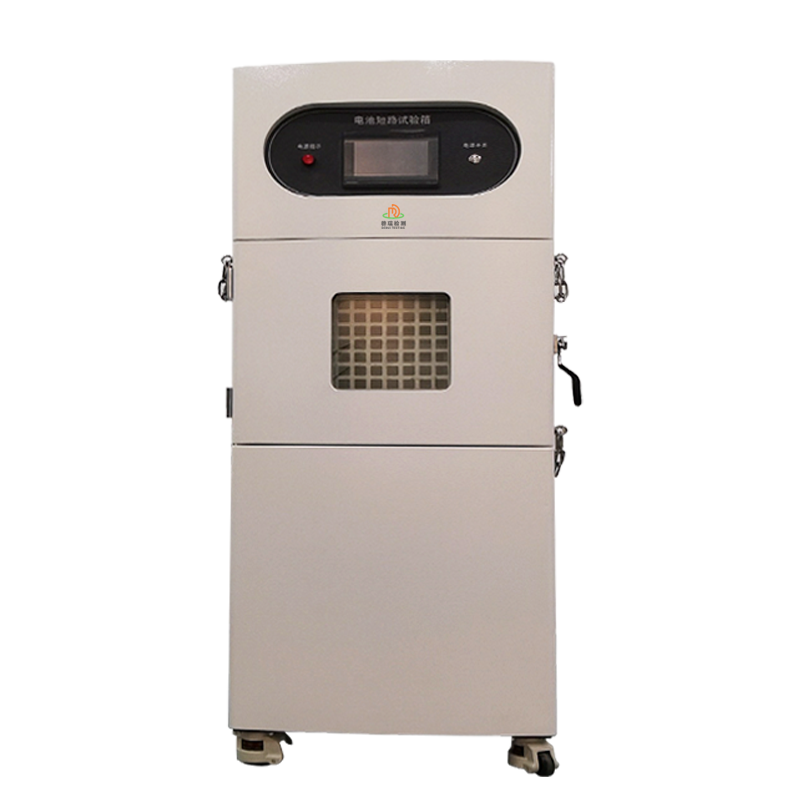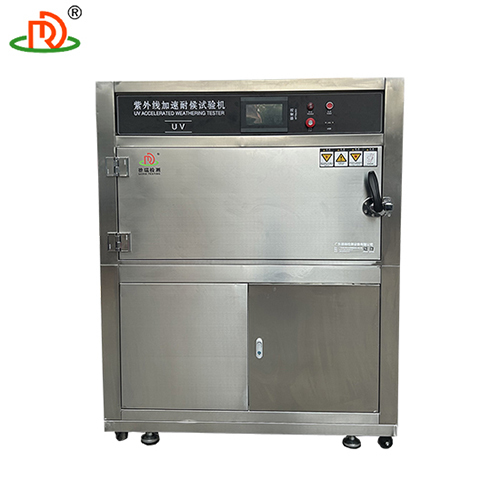
1000A high current short-circuit testing machine
238005.0 INR/Unit
Product Details:
X
1000A high current short-circuit testing machine Price And Quantity
- 1 Unit
- 238005.0 INR/Unit
1000A high current short-circuit testing machine Trade Information
- Cash in Advance (CID)
- 100 Unit Per Month
- 7 Days
- All India
Product Description
| Model | DR-D201 |
| Inner box size | 500x500x500mm (width x depth x height); |
| Equipment dimensions | 700x800x1530mm (width x depth x height); |
| Internal material | SUS201 stainless steel plate, thickness 1.2mm, with Teflon affixed; |
| External material | 1.5mm thick cold-rolled steel plate with paint treatment; |
| Observation window | The size is 250x250mm two-layer tempered glass, the transparent window is equipped with stainless steel mesh; |
| Smoke outlet | 100mm in diameter, located at the back of the box; |
| Pressure relief port | The size of the opening is 200x200mm, located on the back side of the box. When the sample explodes, the pressure relief port will pop open to relieve the pressure; |
| Box door | The single door opens to the left, the box door is equipped with a safety limit switch, and the side is equipped with an explosion-proof chain. The device can be operated only when the box door is closed to ensure the safety of personnel; |
| Test hole | There are 2 test holes with a diameter of 50mm on the left side of the device, which are convenient for putting in the collection lines of temperature, voltage, current, etc.; |
| Lighting device | It is convenient to observe the state of the tested sample; |
| Temperature collection range | RT-1000; |
| Temperature acquisition channel | 1 channel; |
| Temperature display accuracy | 0.5; |
| Voltage acquisition range | 0-100V; |
| Voltage acquisition channel | 1 channel; |
| Voltage display accuracy | 0.5%; |
| Maximum short-circuit current | 1000A; |
| Current acquisition channel | 1 channel; |
| Current display accuracy | 0.5%; |
| The internal resistance of the device loop | 8020m; |
| Equipment movement | There are four universal casters at the bottom of the equipment, which can be moved freely; |
| Control method | PLC touch screen control; |
| Equipment weight | 85Kg |
| Power supply | AC220V;50Hz/60Hz |
1000A High Current Short Circuit Tester Main Functions:
- High-current short-circuit simulation: Through the control system, a short-circuit current of up to 1000A is applied to both ends of the battery to simulate a high-current short-circuit fault in actual use.
- Thermal runaway assessment: Real-time monitoring of the temperature change of the battery during the short-circuit process to assess the risk of thermal runaway and thermal runaway behavior.
- Safety Test: Evaluate the safety performance of the battery under high-current short-circuit conditions, including whether smoke, fire or explosion will occur and other dangerous situations.
- Data Acquisition and Analysis: Real-time acquisition of battery temperature, voltage, current and other data, and generation of detailed test reports to help analyze the thermal runaway characteristics and safety performance of the battery.
- Safety Protection: Equipped with multiple safety protection devices, such as explosion-proof box, fire extinguishing system and emergency stop device, to ensure the safety of the testing process.
Application Fields:
1000A High Current Short Circuit Tester is widely used in the following fields:
- Battery manufacturing industry: used to assess the safety performance of lithium-ion batteries and other types of batteries under high-current short-circuit conditions, to ensure their safety and reliability in actual use.
- Electric Vehicle Industry: To test the safety performance of batteries for electric vehicles under high-current short-circuit conditions, and to ensure their stability under various extreme conditions.
- Energy storage systems: Evaluate the safety performance of batteries for large-scale energy storage systems under high-current short-circuit conditions to ensure their safety in actual use.
- Quality Control: Carry out quality control during the production process to ensure that the battery products comply with relevant standards and customer requirements.
I. Test Object and Purpose
First of all, we should make it clear that this test is mainly for portable sealed batteries and battery packs, such as our common lithium-ion batteries, nickel-metal hydride batteries and so on. Then, what is the purpose of the test? Simply put, it is to evaluate the safety of batteries under extreme conditions. Imagine the consequences if a battery catches fire or explodes in a short-circuit situation. Therefore, this test is crucial!
Second, the key test items
1. External Short Circuit Test: This test is very interesting. The staff will short-circuit the positive and negative terminals of the battery through a very small resistor, and then observe the reaction of the battery. During this process, the temperature will be strictly controlled within the range of 555. The test will continue until the battery case temperature drops by 20% or until 16 hours have been reached. This process is like a stress test for the battery to see if it can withstand such a challenge.
2. Internal Short Circuit Test: This test goes even deeper into the battery. It simulates a short circuit inside the battery to see if the battery is in a dangerous condition. This is like giving the battery an internal physical examination to ensure that its internal organs are healthy.
Testing environment and conditions
When it comes to the testing environment, it is really harsh to describe. Temperature, humidity, air pressure and other parameters are strictly controlled to ensure the accuracy and comparability of the test. This is like building a space capsule for the battery, so that it is tested in a completely controlled environment.
Safety design and automatic protection
Of course, safety always comes first. Temperature-controlled short-circuit test chamber is equipped with over-current protection, over-voltage protection, temperature alarm and other automatic protection functions. These functions are like a security guard, always guarding the safety of the test process. Even if anomalies occur, measures can be taken immediately to avoid accidents.
Fifth, the test results judgment
Finally, let's talk about how to determine the test results. Qualified standards are very simple: the battery in the test can not appear explosion, fire and other phenomena. At the same time, the battery temperature change during the test, expansion and other parameters also need to be within the safety range. This is like a test, only through all the subjects, the battery can get a certificate of conformity.
Tell us about your requirement

Price:
Quantity
Select Unit
- 50
- 100
- 200
- 250
- 500
- 1000+
Additional detail
Mobile number
Email








 English
English Spanish
Spanish French
French German
German Italian
Italian Chinese (Simplified)
Chinese (Simplified) Japanese
Japanese Korean
Korean Arabic
Arabic Portuguese
Portuguese